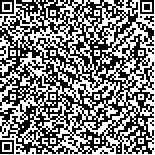陶媛媛,张大伟,冯晓燕,等.脊髓重复磁刺激对骶上脊髓损伤后神经源性膀胱的影响[J].中华物理医学与康复杂志,2023,45(10):899-903
扫码阅读全文

|
| 脊髓重复磁刺激对骶上脊髓损伤后神经源性膀胱的影响 |
|
| |
| DOI:10.3760/cma.j.issn.0254-1424.2023.10.007 |
| 中文关键词: 重复磁刺激 脊髓损伤 神经源性膀胱 |
| 英文关键词: Magnetic stimulation Spinal cord injury Neurogenic bladder |
| 基金项目:江苏省老年健康科研项目(LK2021016);2022苏州市科协青年科技人才托举工程资助 |
|
| 摘要点击次数: 3911 |
| 全文下载次数: 4135 |
| 中文摘要: |
| 目的 观察脊髓重复磁刺激对骶上脊髓损伤(SCI)后神经源性膀胱患者下尿路功能和生活质量的影响。 方法 纳入骶上SCI后膀胱功能无再改善的神经源性膀胱患者15例。试验采取前、后对照设计,第一阶段,为期2周,期间所有患者只接受饮水计划和间歇导尿治疗;第二阶段,为期4周,所有患者在饮水计划和间歇导尿的基础上增加脊髓重复磁刺激干预,刺激位于第1腰椎棘突水平,刺激频率1 Hz,每日1次,每周5 d,连续干预4周。于入组时、第2周结束时和第6周结束时,记录15例患者的排尿日记,并分别对其进行尿流动力学检测,以及神经源性膀胱症状评分(NBSS)和生活质量评分。 结果 第6周结束时,15例患者的导尿次数和平均自排尿量与第2周结束时和入组前比较,差异均有统计学意义(P<0.01)。第6周结束时,15例患者的储尿期最大逼尿肌压,最大膀胱容量,排尿期最大尿道压和排尿效率与第2周结束时和入组前比较,差异均有统计学意义(P<0.01)。第6周结束时,15例患者的NBSS和生活质量评分分别为(23.80±6.88)分和(3.53±1.36)分,与第2周结束时和入组时比较,差异均有统计学意义(P<0.01)。 结论 脊髓重复磁刺激可改善骶上脊髓损伤后神经源性膀胱患者的下尿路功能和生活质量。 |
| 英文摘要: |
| Objective To observe any effect of repeated magnetic stimulation of the spine on lower urinary tract function and the life quality of patients with neurogenic bladder after suprasacral spinal cord injury (SCI). Methods Fifteen suprasacral SCI patients whose lower urinary tract function was not improving were enrolled. In the first 2 weeks, all received water drinking management and intermittent catheterization, while in the following 4 weeks they were additionally provided with daily transspinal magnetic stimulation at the level of the spinous process of the first lumbar vertebra five times a week. The stimulation frequency was 1Hz. The patients kept voiding diaries. Their urodynamics were quantified using neurogenic bladder symptom scoring (NBSS) and a life quality scale. Results The frequency of catheterization and the average voided volume, as well as the maximum detrusor pressure during the storage phase, maximum bladder capacity, maximum urethral pressure during the voiding phase and voiding efficiency at the end of the sixth week were significantly different from those at the end of the second week and before the intervention. The average NBSS and life quality scores then showed significant differences from the earlier time points. Conclusion Repeteitive transspinal magnetic stimulation of the spine can improve lower urinary tract functioning and the life quality of persons with neurogenic bladder after a suprasacral SCI. |
|
查看全文
查看/发表评论 下载PDF阅读器 |
| 关闭 |